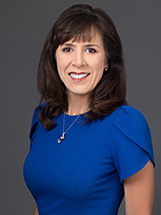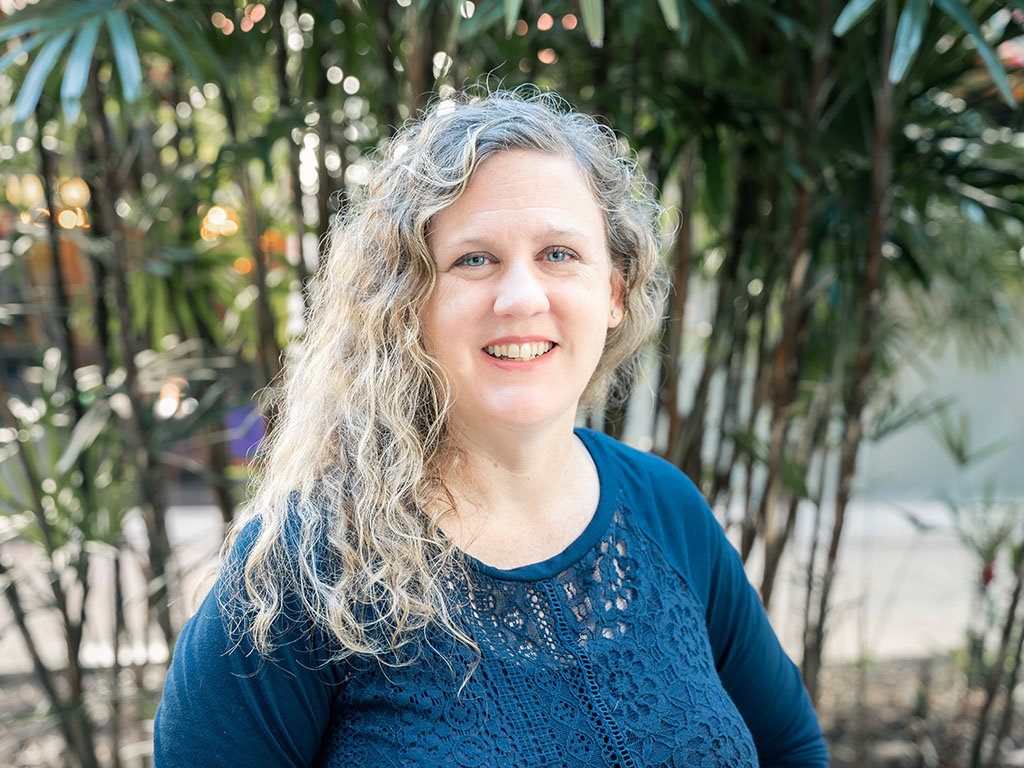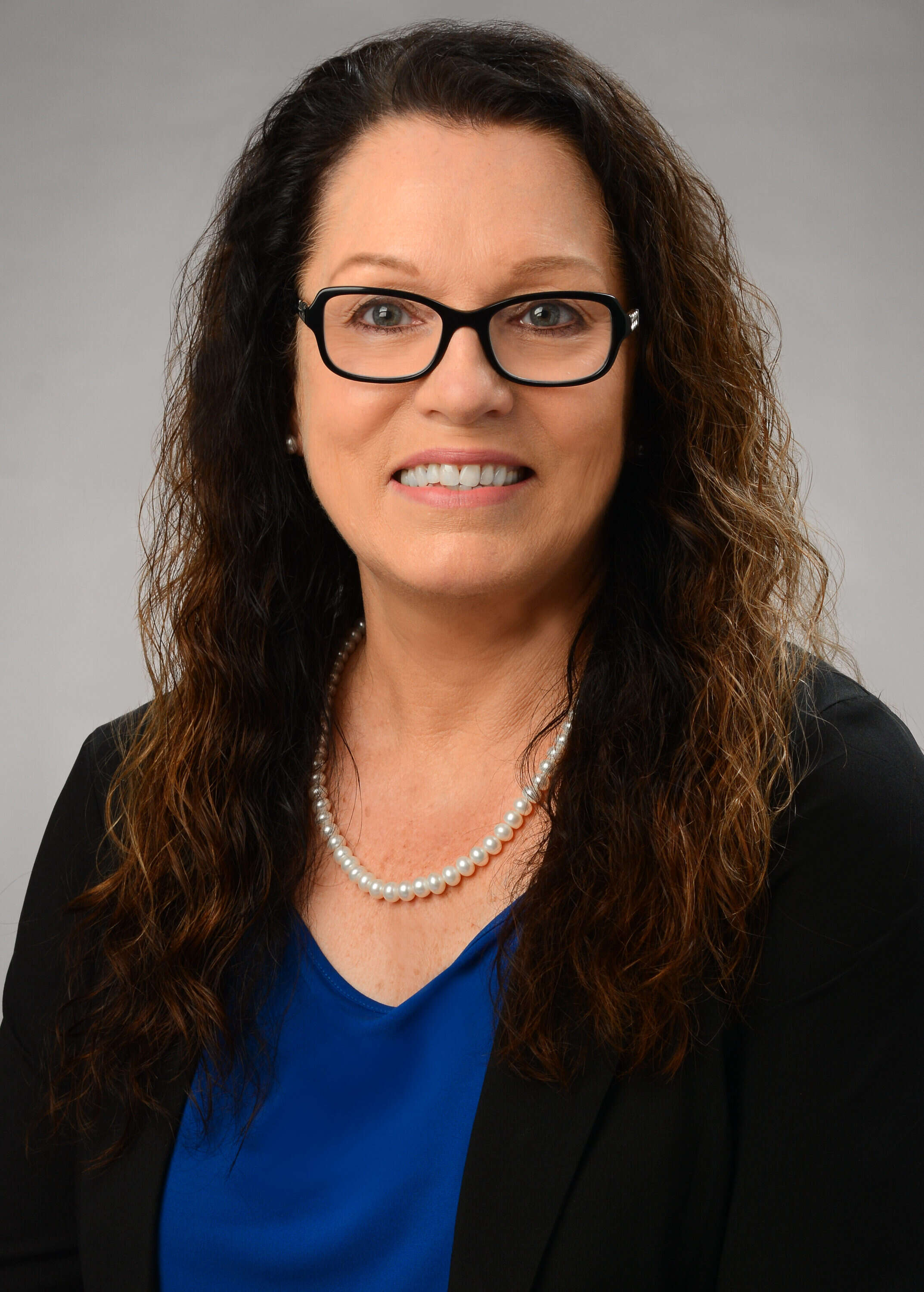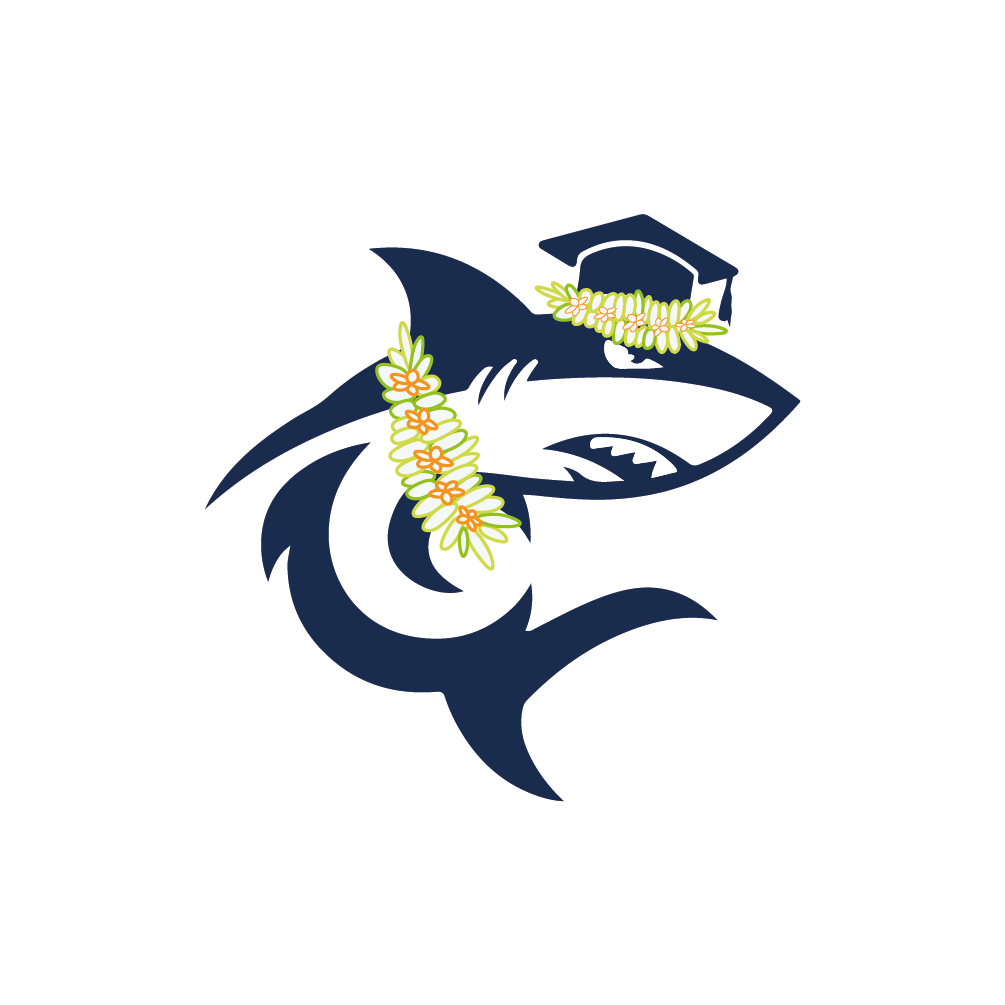Featured Message

As Hawai'i Pacific University's first Chief Strategy Officer, I am responsible for leading the development, execution, and continuous evaluation of the University's strategic position, ensuring alignment with HPU's mission, vision, and values, and long-term goals. With our new strategic planning period just beginning, I am delighted to share HPU's vision for the future and highlight how we are crafting our strategic position to meet the evolving needs of our traditional and modern learners.
First, we are greatly expanding our academic portfolio to meet current and future workforce needs. In recent years, we have added graduate degrees in applied healthcare, business, and cybersecurity, and this fall, we are pleased to add new graduate degrees in construction management and data science, too. In the response to market demands, we are also exploring new graduate programs in computer science, education, engineering, medical sciences, property management, psychology, and speech language pathology. Undergraduate coursework in allied health, artificial intelligence, entrepreneurship, are also in development.
Second, HPU is committed to strengthening industry partnerships, ensuring that our faculty embed real-world, experiential learning experiences into each program. The principle of "learning by doing" is a hallmark of an HPU education, and our expanded network of alumni and industry professionals ensures that every graduate is prepared for personal and professional success starting on Day 1.
Third, we are broadening our institutional perspective by offering our programs in a variety of flexible formats and modalities. Our innovative pedagogies, including the integration of artificial intelligence, and emphasis on mastery of essential skills, ensures that HPU graduates are well-prepared to lead in the industries of their choosing. Additionally, our flexible modalities and course offerings, and our reimagined campus facilities in Honolulu and Las Vegas, are designed to inspire creativity and inventive thinking.
Higher education is changing rapidly, yet our commitment to our students remains timeless. We understand that a college degree continues to be transformative, expanding opportunities and enhancing the quality and longevity of life for those who graduate from HPU. We are honored by the thousands of students who entrust their education and their future success to us each year, and we hold dear the investment that our families, students, and alumni make when they enroll at our institution.
Together with our alumni and community partners, we are creating a university that is responsive to the needs of today and anticipates the challenges of tomorrow. As we embark on this ambitious journey, we remain deeply rooted in the values that define Hawai`i Pacific University: kuleana as we care for our students and communities; pono as we pursue righteous, integrity and truth; and aloha as we lead with compassion, grace, and humility.
Thank you for your unwavering support. We look forward to working together to build the future of higher education at HPU—one that is as innovative and forward-thinking as the students we serve.
JENNIFER WALSH, PH.D.
SENIOR VICE PRESIDENT of strategic Initiatives and Chief Strategy Officer
Previous Featured Messages

Aloha HPU ‘ohana,
Over my 25 years in higher education, I’ve seen the incredible strength that emerges when we embrace the Aloha Spirit—rooted in compassion, community, and care. This semester, I encourage each of us to show up for one another with open hearts and a willingness to support our students in every way possible.
At HPU, we have a unique opportunity to connect in meaningful ways because of our diverse campus and island home. When students embrace these values, they not only succeed academically but also thrive as individuals who make lasting contributions to our internal and global community. From the moment a student is accepted to the day they walk to the podium to receive their diploma, I want them to feel supported, energized, and ready to persevere through challenges.
This is why we’re continuing to improve initiatives to support students and alumni can play an integral part in this engagement. HPU is increasing services to support food insecurity and housing issues, expanding our perspectives to enhance global awareness and striving to improve our responsiveness to the Shark community’s needs. As the Dean of Students, I want to invite and encourage alumni to get involved with our current students. Alumni who persevered can impact current students and shape the future of HPU by creating a stronger network of mentorship and feedback.
As we move through this transformative semester, I invite each of you—alumni, students, staff, and faculty—to continue bringing your energy and commitment. Let’s make this semester one of growth, compassion, and perseverance. Your experiences and contributions are what make HPU a home for many, and together, we’ll rise to every challenge ahead.
Warmly,
Deonne Yeager
Dean of Students

As we kick off the new academic year, I am thrilled to share the exciting developments at the College of Natural and Computational Sciences (CNCS) as HPU continues to push boundaries in innovation and growth. This fall, we opened the state-of-the-art Downtown Science Labs in Fort Street Mall, featuring new biology, chemistry, and environmental science teaching labs, as well as research labs for natural sciences, biomedical engineering and biotechnology engineering. Additionally, our enhanced engineering facilities at Waterfront Plaza now house a biomechanics lab, bolstering biomedical research. These upgrades advance our research capabilities and foster interdisciplinary collaboration, crucial for solving today’s scientific challenges.
The Makapu'u Campus, home to our Marine Science Master’s program since 2007, is now the headquarters for our entire Marine Science Department. Here, undergraduates have greater access to classes and research opportunities. In partnership with Hawaii Marine Animal Response, we’ve developed a Sea Turtle Rehabilitation and Care Center that has received support from the National Oceanographic and Atmospheric Administration and the US Fish and Wildlife Service. The Center for Marine Debris Research also continues to thrive, adding new initiatives in marine debris recycling and a minor in Plastic Circularity. All these projects highlight our commitment to sustainable solutions for our local community and the global environment.
At HPU, community engagement is integral, and we embed real-world experiences into coursework. For example, Carmella Vizza's environmental science students gain firsthand experience in fishpond management and restoration, taking advantage of Hawai‘i's unique “living laboratory” to blend academic learning with environmental stewardship.
I am incredibly proud of our CNCS faculty and students, who consistently achieve remarkable milestones—from securing prestigious grants to spearheading groundbreaking research. Their passion and innovative spirit are shaping the future of science and technology and are making a profound impact locally and globally.
Together, with our unwavering commitment to excellence and community impact, we will continue to push boundaries and drive positive change within and beyond our community.
Brenda Jensen, Ph.D.
Acting Senior Vice President and Provost

At Hawai'i Pacific University, athletics are more than just sports; they are a testament to the transformative power of education and community. "We take pride in being the public face of the university,” says Debra Snell. “Our athletes are everywhere—on campus, in the community, across our conference, at other institutions, traveling, and in between; at the airport, restaurants, grocery stores, etc. Wherever you find them, they are the ones proudly wearing the Shark uniforms.” This visibility and engagement reflect HPU's commitment to creating well-rounded individuals who excel both on and off the field. Debra's own story is a powerful example: hailing from a tiny town in Arkansas, she credits athletics and education with opening doors she never dreamed possible. "Without athletics and education, I wouldn't have had the opportunities I've been given. They've changed my life," she shares. Her journey from a small town to meeting highly motivated, energetic, and accomplished individuals underscores the life-changing impact HPU offers to its student-athletes.
HPU's Athletics Department is dedicated to fostering diversity, leadership, and holistic development. Debra explains. "Our teams reflect all kinds of people, united by their sport. You're a member of an 'ohana instantly." This sense of family contributes to higher retention and persistence among student-athletes, who benefit from strong team connections and diligent oversight by their coaches. The Athletic Department and Division 2 mantra, "Life in the Balance," ensures that students maintain a healthy balance between academics and athletics, with built-in guardrails dictating sport-related activities to prioritize their education. Moreover, the emphasis on community engagement—through mentoring, beach clean-ups, coaching younger players, hosting camps, and partnering with local schools—prepares students for life beyond college. With robust mental health services and a culture of support, HPU's Athletics Department not only develops great athletes but also compassionate, well-rounded individuals ready to serve and lead in their communities.

Q: Can you tell us a bit about your background and how you became involved with HPU?
A: I grew up in Bangladesh, in South Asia. My journey began as a Navy officer, where I served for about 14 years, ultimately retiring as a Lieutenant Commander. In 2014, I embarked on a new chapter, moving to Hawai'i to pursue my Ph.D. in Electrical Engineering at the University of Hawaii at Manoa. My research focused on microfluidics for healthcare technologies. After completing my doctorate, I began my postdoctoral research at Cornell University and UH Manoa, exploring entrepreneurship and renewable energy. A significant turning point came when I was awarded a TRISH (Translational Research Institute for Space Health) postdoctoral fellowship funded by NASA’s Human Research Program. This opportunity was my first exposure to space-related work. With this newfound passion for space, I transitioned into academia, becoming an Assistant Professor at Hawaii Pacific University. Here, I continued my work in space technologies while nurturing the next generation of engineers.
Q: Wow, that is a truly incredible background. I'm sure that wasn't an easy feat as there has been such hard work and dedication leading you up to this point, but you make it sound so seamless. Can you continue to share your insights having gone through these phases and how it affects your teaching as an Assistant Professor at HPU?
A: Before I began teaching, my career was shaped by various mentors who guided me to follow my passions. My research has always been geared toward solving human problems or addressing issues through engineering and technology. At HPU, I strive to blend academics with industry needs. Knowing my students are looking for good jobs, I tailor my teaching to develop the skills that employers seek, providing them with the resources they need to succeed.
I structure my teaching around three key aspects: skill development, academic instruction, and mentorship. My goal is not just to teach but to guide my students from their academic work into successful industry careers.
Q: I'm intrigued! How did you come to prioritize mentorship as one of your main focuses, and how have students responded to this approach?
A: Last semester, I conducted a pilot test to see if I could instill mentoring skills in my students. I asked them to participate in skill-building activities. Initially, they were hesitant due to their full schedules, but eventually, a few agreed to join a competition with me as their mentor.
HPU is a smaller university, and these students were cautious and a bit intimidated about competing against teams from larger universities. I worked to instill confidence in them, and it paid off, proving that our students have great potential. I believe that if professors like me can give a little more of their time—beyond academic training—through mentorship, we can help students develop valuable job-seeking skills. This practice of mentorship can bring out the best in our students. The goal of the pilot test was to achieve this, and it was quite successful.
Q: Can you provide a behind-the-scenes perspective on student success in recent competitions, especially as a smaller school competing against larger, well-known prestigious institutions? How did confidence and mentorship play a role in this success?
A: I’ll share one example among many from last semester. The Department of Energy hosted a competition on the HeroX platform, inviting university teams to create a business plan for energy technology. This exercise provided students with advanced skills in energy data, which encompasses not just engineering, but also economics and business factors. As students with technical backgrounds often find this interdisciplinary approach challenging, it helped that my experience in founding two startups allowed me to offer valuable advice on building business plans. This helped me mentor my students and give them a clear understanding of what they were getting into.
The competition had three phases. First, the students submitted a business plan, and upon success, advanced to the second phase, where 228 applicants were divided into 15 regional teams. HPU competed against West Coast universities, which typically have higher national ratings. Despite the stiff competition, HPU secured first place, becoming the only team from the region to advance to the finals in Austin, TX. There, multiple events prepared them for the final challenge, and competing against 28 student teams from top US universities, the HPU team secured third place. Through my mentorship, I provided comprehensive support, context, background, and insights into Return on Investment.
Their success has inspired more students to compete, eager for the experience and skills gained through such mentorship.
Q: We couldn't be prouder! Congratulations again on these major accomplishments. On that note, how has innovation influenced the recent developments within the engineering department?
A: Innovation is closely tied to research. Last year, one of my students, Greg Ball, embarked on a project to develop a textile that could protect astronauts from lunar dust. This was a pressing issue, as lunar dust poses significant risks to both astronaut and equipment safety on the lunar surface. Together, my students and I worked on creating this innovative textile, integrating an on-demand fluidic metal screen to generate electrostatic forces to repel lunar dust. Though this project is still a work in progress, our goal is to develop a working prototype and test it in microgravity.
Once we demonstrate its functionality in our lab and achieve successful testing in a simulated lunar environment, we plan to approach NASA for a grant to conduct tests, potentially on the International Space Station. This journey, from concept to potential space application, underscores the importance of combining research with practical innovation.
Q: I hope so! It feels like you're on the right track with this path. This raises an interesting question: In promoting these innovative research projects, could you discuss any partnerships or collaborations that have contributed to the department's and students' success, as well as their exposure to the industry?
A: I firmly believe in the power of partnership and collaboration. Through external collaborations, such as with industry, faculty can help develop students to join a compelling future engineering workforce. We've submitted a proposal to the NSF aimed at broadening the participation of minority students in research through industry collaboration. As part of this initiative, I'm organizing an Industry-Academic Workshop with local companies in Hawai'i to bridge the gap between industry needs for an engineering workforce and our mission as educators to prepare brilliant engineers with the skills sought by industry.
These workshops will identify research topics companies are pursuing or areas where students can participate through faculty-advised projects at HPU. This approach allows students to gain and enhance their skills, making them highly desirable candidates for the local industry.
In the future, I hope this collaboration will transform students’ capstone projects into real-world skills, preparing them to enter the workforce immediately upon graduation. The involvement of alumni in our efforts is invaluable. They can provide feedback, serve as industry partners, and offer mentorship. Our goal is to strengthen the relationships between students, industry, and alumni. Alumni who provide one-on-one guidance to students are immensely beneficial.
Q: In conclusion, what do you believe sets the engineering department apart from other programs, and what do you envision for its future growth and success?
A: The NSF has recently published a report on the representation of different minorities in STEM fields. Across Hawaii, the Pacific Islands, and other parts of the U.S., minorities are significantly underrepresented in STEM, particularly in engineering. This underrepresentation presents a unique opportunity for Minority-Serving Institutions (MSIs) like HPU. Minority students at smaller institutions like ours are crucial in filling these gaps.
Our engineering department is relatively new, but its achievements over the past few years highlight our tremendous potential. We focus on fostering diversity and inclusion, and the innovative potential of engineering to solve many human problems underscores the demand and need for this field. This focus sets us apart from many other programs. Our commitment to providing personalized mentorship and real-world experience through industry partnerships ensures that our students are academically prepared and equipped with practical skills highly sought after by employers.
Engineering is omnipresent, and the demand for skilled engineers continues to grow. At HPU, we are uniquely positioned to meet this demand by cultivating a diverse and talented pool of future engineers. Looking ahead, I envision our department growing both in size and reputation, becoming a leader in producing innovative, resilient graduates ready to tackle the challenges of tomorrow's world. Our future growth and success will be driven by our commitment to excellence in education, research, and community engagement.

Sharks Legacy is an energetic, student-driven initiative at Hawai'i Pacific University designed to support graduating students’ transition to becoming connected alumni. Through the advice and guidance of Olivia Ngokion of the University’s Advancement staff, a diverse and talented group of students serve on the Sharks Legacy Committee. The committee—currently comprised of Ella Berge, Nora Bjoerk, Iyania Story-Cruz, and Arya Sarma—engages graduating students through various in-person activities and a dynamic social media presence on Instagram and LinkedIn. Data analytics guide the committee’s understanding of successful posts and motivates them to create even more effective content. One of their Instagram posts ranked among the top in the first quarter of 2024 across all Hawaiʻi institutions!
The Sharks Legacy Committee encourages graduating students to contribute to their class gift in celebration of their graduation, and to sign up for HPU Connect. This online platform fosters career engagement among HPU alumni. We hope all alumni sign up for HPU Connect; recent graduates benefit tremendously from your networks and experiences.
Purposeful engagement, relationship-building, and ongoing connections are at the heart of the HPU spirit. Thanks to the Sharks Legacy Committee, our newest alumni better understand the value of forever remaining a part of the HPU ‘ohana.
Don’t forget to remain connected to your HPU ‘ohana! Tell us about yourself here.

MESSAGE FROM PRESIDENT JOHN GOTANDA
Welcome to HPU’s second edition of Kai Ulu: Alumni Currents. One of the most rewarding aspects of my role is fostering relationships with our alumni community. Just in the last year, I met graduates who are successful entrepreneurs and business owners, and others who are leaders of mature industries. I met a recent graduate from Hawaiʻi, boldly launching her career in mid-town Manhattan, and a mid-career alumni couple working to address complex international cybersecurity issues.
Just like you, today’s students are from around the globe, gathering in the heart of the Pacific to experience HPU’s innovative academic programs. They work closely with world-class faculty while learning in one of the world’s most unique environments. To ensure our students are prepared not just for their first job, but for their entire careers, we continually update our curriculum and expand student opportunities for co-curricular, hands-on experiences.
One such initiative on campus is our new Maker Space—a hub dedicated to fostering entrepreneurship, creativity, and innovation. This space is a collaborative workspace equipped with cutting-edge tools and technology. HPU is driving innovation in education, and the Maker Space embodies this commitment by providing a dynamic environment where ideas flourish and new ventures take shape. I invite you to immerse yourself in the culture of innovation and creativity at Hawaiʻi Pacific University as you explore the Maker Space article.
At HPU, we are cultivating the leaders, thinkers, and innovators of tomorrow. For HPU to continue to strengthen, it is vital to have your engagement. Learn about HPU through Kai Ulu. Keep us informed of your career and life journey. Serve on panels or speak in the classroom. Give us story ideas. We’d enjoy hearing from you—and seeing you in person where possible!
It is an honor to witness the profound impact our alumni have on their communities and the world. Let’s partner together to ensure that today’s students are fully prepared to follow in your footsteps.
 Introducing: Kai Ulu, Alumni Currents E komo mai!
Introducing: Kai Ulu, Alumni Currents E komo mai!
It is my great pleasure to introduce the first issue of Hawaiʻi Pacific University’s new monthly e-communication, Kai Ulu: Alumni Currents. As Kumu Ramsay Taum articulates below, this publication’s name was thoughtfully chosen. Kai Ulu represents a cohesive characteristic within the HPU ʻOhana—our extended family of students, alumni, faculty and staff, past, present and future. I encourage you to reminisce about your time at Hawaiʻi Pacific University as you read Kumu Taum’s message.
Each month in Kai Ulu, we will share our latest news. We will celebrate the achievements of members of our community. We will work to reconnect you with HPU and each other. We hope that these Alumni Currents will become indispensable as you discover new things about your alma mater.
Maureen C. Silva, Ph.D Vice President of Advancement

